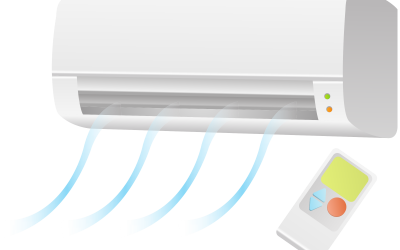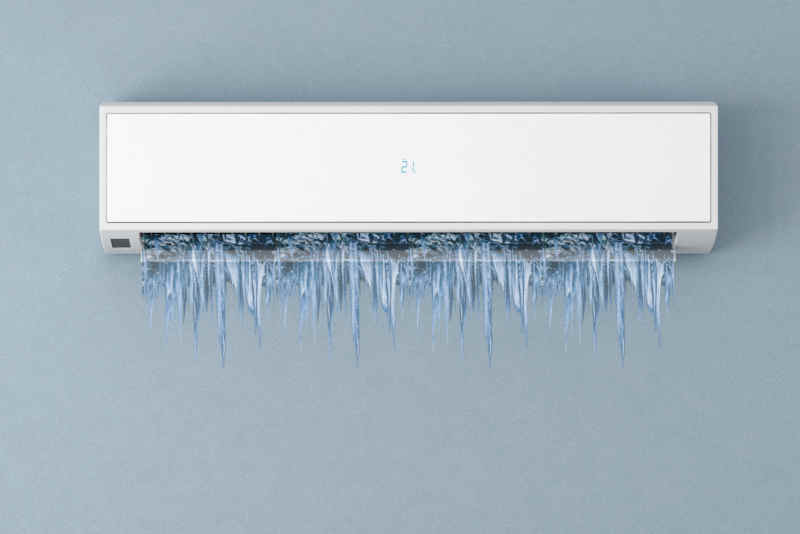Australia is famous for its sweltering hot summers, and the sub-tropical state capital of Brisbane is no exception. As our kids tepidly return to school in February, the mercury has been known to soar well above 30C.
An American Economic Association study of 10 million US schoolchildren found high temperatures have a significant negative impact on classroom performance. A temperature increase of just 1F (0.56 C) above comfortable levels leads to a 1% reduction in overall learning. As you’d expect, the study also determined air-conditioning is the most effective to rectify the issue.
Adequate air-conditioning not only bolsters our children’s well-being; it also gives them a greater chance to succeed.
In this post, we’re discussing the pros and cons of the four main air-conditioning types for schools. We’ll also provide insightful advice on the most suitable air-conditioner types for specific situations.
Split System Air-Conditioners
The widely popular split system features an external unit drawing fresh air from the outside and an internal unit dispersing cool air through the classroom. It’s primarily intended to heat or cool individual rooms of small or medium size—a standard classroom fits the bill.
The teacher can manually adjust the temperature through a remote control or mobile app. Low installation and maintenance costs make the split system an affordable stop-gap option for single rooms in budget-conscious schools.
Although split systems (and multi-split systems) make a small amount of ambient noise, a modern, well-maintained unit will keep disruption to a minimum.
Split System Pros
- Effectively cools or heats an individual room
- Cheap to install and maintain
- Energy efficient
- High temperature range
Split System Cons
- Only suitable for single, relatively small classrooms
- Creates some ambient noise
When to Choose Split Systems
The split system is ideal for schools seeking an affordable cooling solution for small specific classrooms across various sections of the campus. However, it’s not suitable for large spaces like auditoriums.
A high-quality split system like the Actron Air Serene Series has a seven-star energy rating and a 60-degree temperature range. Its eco-friendly R32 refrigerant reduces your carbon footprint, while the DC Direct Current Inverter Technology further minimises your electricity bill.
Multi-Split Air-Conditioners
Multi-split air conditioners function similarly to split systems. The key difference is they allow multiple internal units to connect to the same external unit. That way, a school can install air-conditioners across several (usually up to 5) nearby classrooms for a lower cost.
The technology is expandable, too. You can always add more internal units at a later date.
The versatile option lets you handpick internal units of varying sizes. For example, it’s possible to install a powerful internal unit in a large classroom and a smaller unit for a more compact space. This customisable design bolsters efficiency, thus reducing your quarterly electricity bill.
Despite its interconnectivity, the teacher can control the temperature of their specific classroom through a remote or mobile app.
However, if the external unit breaks down, all the interconnected internal units will cease to function until a technician can fix the issue.
Multi-Split Air-Conditioner Pros
- Heats or cools multiple classrooms via one external unit
- Lower installation cost than installing several split systems individually
- Control the temperature in each specific classroom
Multi-Split Air-Conditioner Cons
- All internal units rely on the one external unit
- Not financially viable for a single isolated classroom
- Creates some ambient noise
When To Choose Multi-Split Air-Conditioners
Choose this option if you need to install air-conditioning across multiple nearby classrooms or if you expect to add air-conditioning to other nearby classrooms at a later date.
A state-of-the-art system like MultiElite from Actron Air will simultaneously cool up to five classrooms. Boasting an energy-efficient and space-saving design, the unit has a five-year warranty for total peace of mind.
Cassette Air Conditioners
While split and multi-split systems attach to a wall, the cassette air-conditioner clings to the roof and blasts cool air downward. This design creates a more even spread of cold (or warm) air across the classroom as its fans can blow in four different directions.
The cassette saves on wall space, can interconnect with a multi-split system, and boasts a discreet aesthetic. It’s only effective in relatively small areas, including a standard-sized classroom.
The installation often costs more than a standard split system as the technician must access the roof. Maintenance is minimal, and the teacher can control the temperature via a remote or mobile app.
Cassette Air Conditioner Pros
- Evenly spreads cold or hot air around the room
- Saves on wall space
- Sleek, unobtrusive design
- Easy maintenance and temperature control
Cassette Air Conditioner Cons
- Only suitable for medium-sized classrooms
- Higher installation costs
When To Choose A Cassette Air-Conditioner
The cassette air-conditioner is an attractive alternative for schools that wish to cool individual classrooms without sacrificing wall space. Although installation is more expensive, the design cools the room more evenly and offers better aesthetics.
The industry-leading Actron Air Cascade comes with a suspended or floating ceiling design and 360-degree airflow. Enjoy comfort from every angle and customised cooling with this sleek, space-saving design.
Ducted Air Conditioners
Ducted air-conditioning is a comprehensive solution for cooling multiple classrooms, teachers’ lounges, and hallways across an entire campus.
Rather than installing an external unit on an exterior wall, ducted air-conditioning has a central unit above the ceiling. From there, a network of ducts channels hot or cold air into a nearly limitless number of rooms—you could potentially cover the whole school. The ducts terminate in the ceilings or walls of each interconnected room with a streamlined, aesthetically-pleasing grill.
Ducted air-conditioning requires a specialised labour-intensive installation, which is more time-consuming—and, therefore, more expensive—than alternative options. However, its energy-efficient design and all-encompassing nature can make it the more economical choice in the long run. It’s also considerably quieter than other air-conditioning types.
However, ducted air-conditioning requires sufficient space in the roof to install each duct. Therefore, you should ideally get it installed during the construction phase. Retro-fitting is possible in some Australian schools but not viable in others.
Teachers and admin staff can adjust the airflow in each duct via a remote or mobile app.
Pros
- Comprehensive temperature control solution for a large school
- Quieter than other air-conditioning types
- Energy-efficient design
- Easy to control individual areas via a mobile app
Cons
- Costly installation job
- Requires adequate roof space (retro-fitting is not viable in some schools)
When To Choose Ducted Air Conditioners
Ducted air-conditioning is a top option for schools that wish to cool numerous classrooms across campus. While multi-split systems only serve up to five rooms at a time, the more powerful ducted system can potentially reach the entire school. Its energy-efficient design makes it ideal for schools happy to pay a higher upfront price to reap savings in the long run.
Actron Air offers a wide range of ducted systems to suit schools of any size. Consistent temperature control, campus-wide coverage, and silent fans make it a smart choice for any eligible school.
Let Advanced Climate Solutions Find the Right Air-Conditioner For Your School
Need expert advice regarding the most suitable air-conditioning option for your school?
Then get in touch with the team at Advanced Climate Solutions today. Our in-house industry experts can evaluate your needs and recommend the perfect air-conditioning solution.
We also offer air-conditioner servicing, including filter cleaning, thermostat adjustments, refrigerant maintenance, and leakage detection.
With over 12 years of experience serving the Greater Brisbane and Bayside region, we’re your go-to local air-conditioning specialists.




